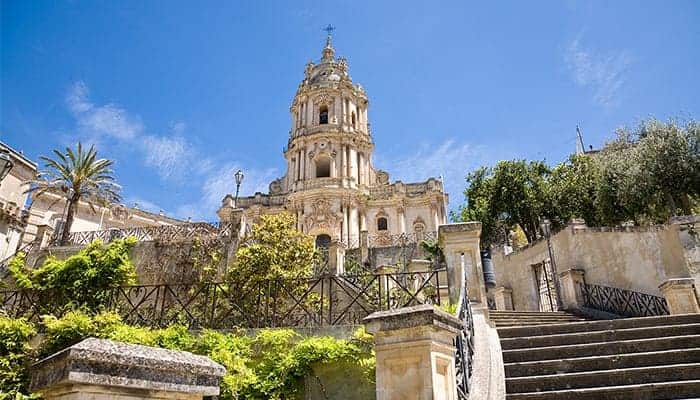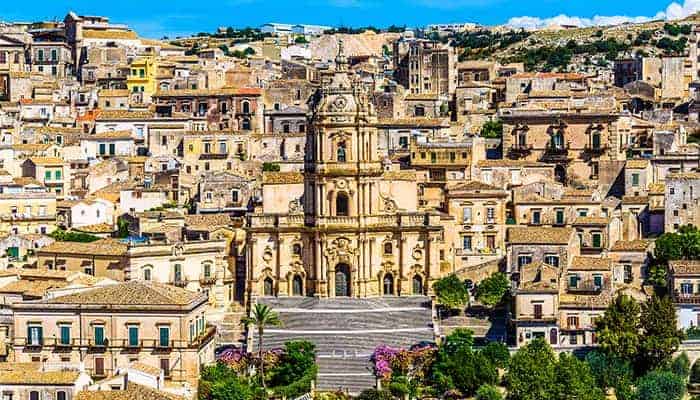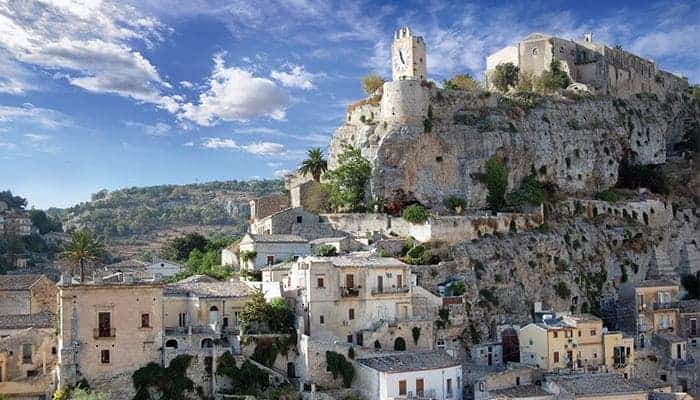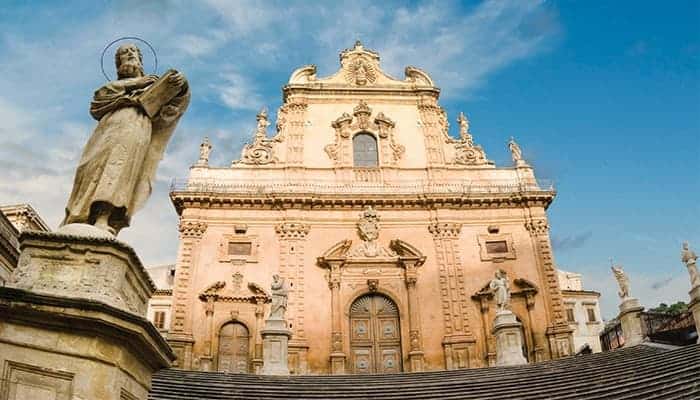
In 1296 Modica passed to the Chiaramonte family who ruled for nearly a hundred years. The city and the region then passed to the Cabrera family, with the city continuing to flourish in wealth and power until, in practical terms, it became a semi-independent state within Sicily, which at the time was still under Spanish rule. The economy depended mostly on agriculture and with such a vast territory under its control the export of grain to Mediterranean ports resulted in the city state gaining an international importance. The city was served by seven ports of which Pozzallo became the principal port for the export of grain and where the Conte Cabrera built a defense tower, Torre Cabrera. Pozzallo is the Virtu Ferries catamaran’s port of call and is only 30 minutes away by car from Modica.
The earthquake of 1693 which devastated the whole of south western Sicily also brought complete ruin to Modica. Modica was rebuilt immediately after the earthquake and is now essentially two towns, Modica Alta, purely commercial and residential and of no real interest, and Modica Bassa, the historic centre.
Must see:
Proudly standing on the top of the hill is the magnificent Duomo San Giorgio, one of Rosario Gagliardi’s Sicilian Baroque masterpieces, with its long elaborate 164 steps stairway and a panoramic view of Modica Bassa. The Duomo is a sight worth seeing and the sight from the Duomo is worth seeing.


The main street Corso Umberto I is lined by baroque churches and monasteries, little wonder the city is referred to as La Citta Delle Cento Chiese (City of one hundred churches). Expensive brand shops and fine cafes intermingle with the churches to give an affluent air to the city centre. The town is particularly picturesque, built as it is on the slope of a hill. Seen from Guerrieri Bridge, better known as Modica Bridge, 300 meters above Modica Bassa, the view is breathtaking; at night the city looks like a Christmas crib. Modica Bridge is one of the longest bridges in Europe.
Modica is now best known for the Cioccolato di Modica or Cioccolata Modicana. The Spanish introduced the recipe, they got it from the ancient Aztecs of Mexico. Sicily was under Spanish rule when the Spaniards discovered the new world. The recipe has not changed and the cioccolata is made straight from the cocoa bean with no added butter. The very strong taste disguised by numerous different flavours, traditionally vanilla or cinnamon, other flavours are easy enough to come by – chili, peppers, tomatoes, you name it, just ask for it. A chocolate festival, the Chocobarocco, is held every year usually around mid-March when chocolate stalls take over the main street; some of the chocolate sculptures are amazing. Chocolate shops open all the year round and welcome visitors; the Antica Dolceria Bonajuto is one well known chocolate factory shop.
A more modern milk chocolate is creeping onto the market to cater for tourists’ taste.


On the last Sunday of every month an outdoor flea market is held at one end of the main road, attracting bargain hunters from all over the place. Things you never thought of appear on the stalls and are subject to all sorts of amusing comment.
Not only is Modica a UNESCO Heritage Site but the Duomo San Giorgio is a UNESCO listed building.